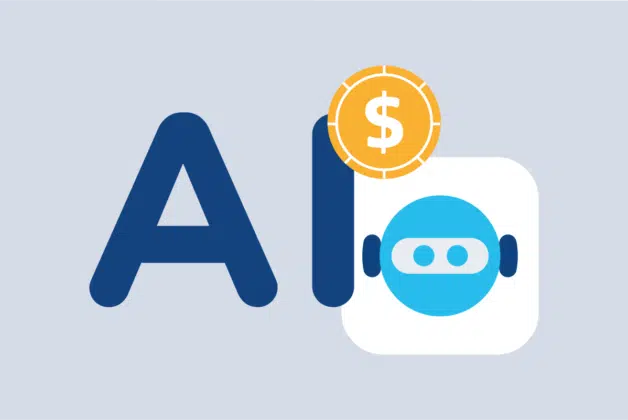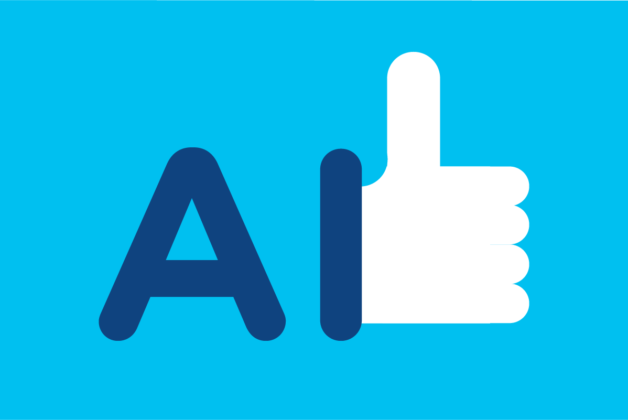 Fiamma Romano - 22 septembre, 2023 - 5 ’ read
Fiamma Romano - 22 septembre, 2023 - 5 ’ readHow Conversational AI brings Business Innovation for Customers and Workers
Customer service isn’t just about answering questions. It’s a whole experience. Today, customers don’t have the patience for hold music or « your call is important to us » messages. They look for instant, 24/7, personalized answers.
In this scenario, conversational AI-based chatbots and voice bots are what’s redefining the standards of customer experience. They are quick, smart, and always awake. Chatbots and voice bots make customer support faster while lightening the load for human agents – not only giving businesses a competitive advantage, but also meeting the increasing need for round-the-clock assistance and tailored interactions.
Chatbots are perfect for situations where fast support is of essence. Some examples are answering fast questions like FAQs, tracking orders, and booking appointments. Online shopping is another good use cases, as customers often have questions about product details or return policies.
Voice bots, on the other hand, cover the communication channel that still holds the first place in support cases: phone calls. More than 60% of customers still call businesses when they need help. While it’s true that people are transitioning to chat, the phone is still the channel that feels more trustworthy.
Chatbots and voice bots work together to improve customer service, making conversational AI for business the easiest choice to improve user experience and satisfaction.
Let’s explore the benefits of conversational AI for both customers and workers, how it brings business innovation, and effective implementation strategies, to finally answer the questions many businesses pose themselves: is it worth it to invest in AI?
The Benefits of Conversational AI for Customer & Worker Experience
Conversational AI helps businesses offer a range of benefits for customer & worker experience.
Conversational AI for customers represents an easy way to quickly solve common issues, giving them the speedy communication they’re looking for. At the same time, conversational AI for workers makes it easy to remove repetitive tasks from the agenda and focus on more complex ones, increasing job satisfaction.
Conversational AI gives customers more control over their queries. It enables self-service assistance, ensuring they’ll always have a way to contact your business. But if an issue needs more attention, it is easy to switch to a human expert. This way, customers get the right help when they need it most. Moreover, conversational AI for customers is an easy tool to find relevant information with one question, avoiding lengthy searches through your website.
Chatbots & voicebots are available 24/7, provide support whenever needed, and available to the customer from multiple touch points: WhatsApp, Telegram, Messenger, and more.
The accessibility of these services on everyday platforms not only makes it easier for customers to seek support but also enhances their experience, allowing them to use familiar tools and reach out in busy times, such as when they’re on-the-go, without needing to carve out the time for a phone call.
Moreover, chatbots and voice bots erase waiting times, as they can manage high volume of interactions simultaneously. Last but not least, Conversational AI for customers provides personalized recommendations by analyzing their preferences and past interactions, making support feel tailored to their needs. This also means that AI agents memorize past interactions, helping customers avoid repeating their issues and continue their conversations with your business from where they stopped.
How Conversational AI Technologies Work
Chatbots
Chatbots are to engage in written conversations. They utilize Natural Language Processing (NLP) to analyze and understand customer queries and identify intent. Natural Language Generation (NLG) then allows them to deliver relevant responses.
For businesses looking to adopt chatbots, there are two primary approaches to implementation: building a custom solution or opting for pre-built platforms. Developing a custom chatbot provides flexibility in tailoring the bot to suit the unique needs of conversational AI for business. However, this approach typically requires significant investment in time and resources, along with an ongoing reliance on IT teams for updates and maintenance.
On the other hand, pre-built chatbot platforms offer a cost-effective and accessible alternative. No-code platforms, which allow businesses to create and manage chatbots without requiring programming skills, are particularly appealing. These solutions come with easy-to-use interfaces, enabling teams to quickly set up a chatbot and make changes as needed. No-code platforms save money and time while empowering non-technical staff to take control of the chatbot’s functionality.
Voicebots
Voicebots are similar to chatbots but operate in the realm of spoken language rather than text. They harness NLP to interpret and NLG to respond to voice-based customer queries. By recognizing speech patterns and nuances, voicebots excel at providing a conversational, human-like experience for users. Industries such as banking, healthcare, and retail have increasingly adopted voicebots to enhance customer support and deliver personalized interactions.
Much like chatbots, businesses can implement voicebots using no-code platforms. These platforms simplify the development process, offering pre-built templates and intuitive configurations. This means businesses can deploy voicebots without the heavy involvement of developers, reducing costs and expediting rollout.
Best Practices for Implementing Conversational AI Technologies
To ensure successful implementation of conversational AI technologies, businesses should follow best practices such as:
- Clearly defining the use cases for the chatbot or voicebot. This helps in creating a more focused and targeted user experience. In addition, a well-defined use case allows for better alignment between the capabilities of the chatbot or voicebot and the expectations of the users.
- Providing clear guidance for users on how to interact with the technology. By providing step-by-step instructions and intuitive user interfaces, users can navigate and utilize the technology with ease.
- Regularly reviewing chatbot data. By analyzing the data, valuable insights can be gained, allowing for an upgrade of performances and identification of areas for improvement, ultimately optimizing user experience.
- Offering customers the option to speak to a human agent. Sometimes a human touch is needed. If the chatbot or voicebot is unable to solve their issue, businesses should ensure that customers can receive personalized assistance and have their concerns addressed effectively.
Conversational AI for business: conclusions.
By investing in conversational AI technologies, businesses will be well-positioned to stay ahead of the curve and meet customer demands for an optimized experience.
For customers today, 24/7 service through multiple channels isn’t just a bonus. It’s an expectation. Nobody wants to restrict their queries to limited office hours. Or, even worse, deal with the frustration of call transfers and waiting list music.
This is particularly true for non-urgent issues, where convenience takes priority. Conversational AI for customers can easily solve this matter.
Chatbots ensure immediate responses around the clock through a variety of platforms like WhatsApp, Telegram, or Messenger. It enables users to reach out using the tools they already use daily. This familiarity not only simplifies communication but also builds trust and ease of access.
While digital channels are vital, the voice channel remains a major part of customer service. Conversational AI bridges this gap by integrating voice and chat channels, allowing businesses to cater to users’ preference. For instance, a customer can start a chat, switch to a call for a more complex concern, and then revert to chat. All fluidly managed by conversational AI for your business.
This flexibility enhances the customer experience by making the process not just effective but also personalized. Conversations can feel tailored as AI dives into preferences and past interactions, ultimately driving satisfaction and long-term retention.
On the other hand, conversational AI for workers is equally beneficial. It takes the burden of repetitive tasks off their hands, freeing up time for them to focus on more complex customer needs.
For example, during peak times or scheduled breaks, AI systems can handle high volumes of inquiries, ensuring no downtime. Beyond that, when an issue requires escalation, conversational AI provides immediate context to agents. This means workers can jump into the conversation knowing the customer’s history, saving valuable time on both ends. Plus, it avoids the dreaded “I’ve already explained this” complaint from customers.
The benefits extend beyond just improved customer satisfaction and streamlined employee workflows. Businesses that invest early in conversational AI position themselves ahead of competitors. Conversational AI for business is an easy way to improve services without adding to costs and demonstrate innovation that builds happier, more loyal customers. Ultimately, the competitive advantage of being able to meet modern customer demands is enormous.
Looking ahead, conversational AI will shape the future of customer service trends. Its potential to blend AI capabilities with human expertise is only scratching the surface.
Businesses that invest in conversational AI-based chatbots and voice bots are ensuring long-term success for their company. And last, but not least, they’re making sure they meet, and exceed, customer expectations.
This blog post only scratches the surface of what conversational AI can do for customer service and user experience. If you’re interested in learning more about how these technologies can benefit your business and if you’re looking for a conversational AI provider that follows the best practices and guides you into a flawless experience, look no further – check out the Imagicle Digital & Voice Virtual Agents.
Vous pourriez également être intéressé par...
-
Products BlogAI Virtual Receptionist Cost: Plans, Average Pricing and ConsiderationsAI Virtual Receptionist Cost: Plans, Average Pricing and ConsiderationsLooking for a virtual assistant? Learn everything about AI Virtual Receptionist cost and selling plans structures.
-
Products BlogAI Virtual Receptionist: the cost of not investing in itAI Virtual Receptionist: the cost of not investing in itInvesting in an AI Virtual Receptionist shouldn't be so scary: let's debunk some myths.
-
Products BlogAre AI Virtual Receptionists Worth It?Are AI Virtual Receptionists Worth It?Is an AI Virtual Receptionist a good investment for your business? Read about common objections and answers.


